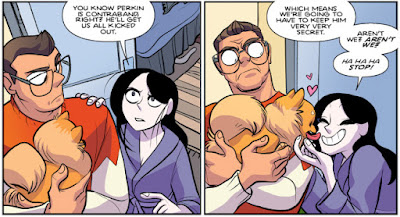The news is making its way out on various social media platforms that Dave Evans, aka Bolt-01, died unexpectedly earlier this week.
Dave was like a landmark in the UK comics scene, as co-editor and publisher of FutureQuake Press, home of the FutureQuake anthology, the 2000AD-themed fanzine Zarjaz, and the Strontium Dog-themed fanzine Dogbreath. He was a perennial presence at conventions, his table laid out with comic book wonders, sought out by fans and pros alike.
I've often described Dave and FutureQuake press as the backbone of the UK small press, because it's true. Dave and his co-editor, Richmond Clements, set the bar high for their contributors and many UK creators' careers have their origins in the pages of FQP publications, in no small part due to the diligent, thoughtful editorial skills Dave and Rich brought to their titles.
(Dave was also a prolific letterer, handling many of the lettering duties on FQP's books, and for other publishers, with great care and skill.)
And that's what Dave did, for many, many years. But that's not who he was.
Dave was a lovely man. A warm, genuine human being about whom I have genuinely never heard a bad word spoken. Everyone knew Dave. Everyone loved Dave. And he was my friend.
I didn't know Dave as well I'd have liked, largely due to my own patchy attendance at UK conventions, but I'd run into him every couple of years, and I'd contribute to FQP's books whenever he asked me. I was emailing him barely two weeks ago, exchanging lettering tips and talking about how much we were both looking forward to the convention circuit eventually resuming and planning to hit the bar at the first available opportunity.
And now he's gone. My brain refuses to process the fact that I won't be loudly greeted by him (often from halfway across the hall), that I won't make my way through the more-or-less permanent crowd at his stand and be met by that great, friendly grin of his. That I won't sit in a pub and talk extraordinary amounts of Nerd Shit™ with him over a pint (or several).
All of British comics is poorer for his loss.
But, for all that, I'm unable to imagine how much greater the loss is for his many close friends, and for his family, his love for whom was evident whenever you met him. My heartfelt condolences go out to every one of them.
Farewell, Dave. I'll miss you, you loveable old bastard.



























